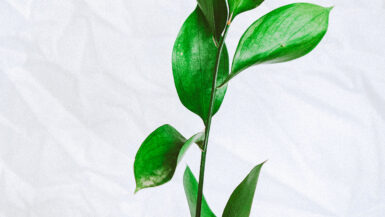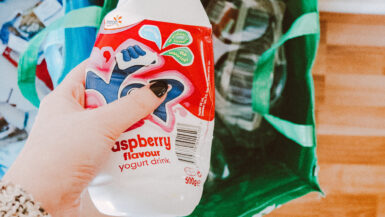In today’s increasingly eco-conscious world, the growing movement of plastic-free living has inspired many individuals to explore creative and sustainable alternatives in various aspects of their lives. One such area that has gained significant attention is the realm of crafting and hobbies. In this informative article, we delve into the world of Plastic-Free Crafting, highlighting a range of eco-friendly hobbies and supplies that allow enthusiasts to indulge in their artistic passions while minimizing their environmental impact. From choosing natural and biodegradable materials to supporting ethical companies, we aim to provide you with valuable insights and practical tips to help you embark on a fulfilling journey towards sustainable creativity.
Sustainable Craft Materials: Alternatives to Single-Use Plastics
The art of crafting often involves the use of various materials, many of which are unfortunately made of single-use plastics. As we strive to embrace plastic-free living, it is essential to seek out eco-friendly alternatives that can still meet our artistic needs. In this section, we will explore some sustainable craft materials that can effectively replace single-use plastics, without compromising on quality or creativity.
Plant-Based and Recycled Fabrics
A great alternative to synthetic fabrics, such as polyester and acrylic, is opting for plant-based or recycled fabrics. Materials like organic cotton, linen, hemp, and bamboo are not only biodegradable but also require fewer resources to produce compared to their synthetic counterparts. Additionally, choosing fabrics made from recycled materials, such as reclaimed ocean plastics or post-consumer waste, can help reduce the demand for new plastic production.
Natural and Biodegradable Adhesives
Traditional glues and tapes often contain harmful chemicals and are not biodegradable. To minimize environmental impact, consider switching to natural adhesives, such as wheat or rice paste, which are renewable and non-toxic. Alternatively, you can find biodegradable tapes made from paper or cellulose that can be easily composted after use.
Wooden and Metal Craft Tools
Plastic craft tools, such as rulers, scissors, and crochet hooks, can be easily replaced with more sustainable options made from wood, metal, or even bamboo. Not only are these materials more durable, but they also impart a unique aesthetic appeal to your crafting experience. When selecting these alternatives, opt for ethically sourced wood and recyclable metals to further reduce your ecological footprint.
Eco-Friendly Beads and Embellishments
For jewelry making and other decorative crafts, consider using eco-friendly beads and embellishments made from natural materials like wood, glass, or clay. These options not only add a distinctive touch to your creations but also help to support sustainable practices in the crafting industry. Additionally, you can explore the world of upcycling by repurposing old jewelry or utilizing found objects as unique decorative elements.
By making conscious choices in selecting sustainable craft materials, you can continue to nurture your creative spirit while contributing to a healthier planet. As you explore these eco-friendly alternatives, you’ll likely discover that the possibilities for plastic-free crafting are as diverse and inspiring as your artistic imagination.
Zero-Waste Knitting and Crocheting: Eco-Friendly Yarns and Tools
As knitting and crocheting continue to gain popularity among craft enthusiasts, the need for sustainable practices within this realm is becoming increasingly crucial. In this subsection, we’ll explore a variety of eco-friendly yarns and tools that can help you create beautiful, handmade projects while adhering to zero-waste principles and minimizing your environmental impact.
Organic and Natural Fiber Yarns
One of the most significant steps towards zero-waste knitting and crocheting is choosing yarns that are made from organic or natural fibers. These yarns are not only renewable and biodegradable but also typically free from harmful chemicals that can be found in synthetic materials. Some popular options include organic cotton, linen, hemp, and wool. Additionally, you can explore yarns made from less common materials like bamboo, soy, or even banana fibers, which each offer unique textures and benefits.
Recycled and Upcycled Yarns
Another sustainable option for yarn is to choose those made from recycled or upcycled materials. These yarns are created by repurposing textile waste, discarded garments, or even plastic bottles, thus reducing the need for new resources and contributing to a circular economy. Not only do these yarns help divert waste from landfills, but they also provide an interesting and eco-friendly alternative for your knitting and crocheting projects.
Ethically Sourced and Fair Trade Yarns
In addition to selecting eco-friendly materials, it’s essential to consider the ethical aspects of yarn production. By choosing ethically sourced and fair trade yarns, you can support responsible farming practices, animal welfare, and fair labor conditions for workers within the textile industry. Look for certifications like Fair Trade, GOTS (Global Organic Textile Standard), or Responsible Wool Standard to ensure that your yarn purchases align with your values.
Reusable and Sustainable Knitting and Crocheting Tools
To further reduce waste and plastic consumption, consider investing in high-quality, reusable knitting and crocheting tools made from eco-friendly materials like wood, bamboo, or metal. These options are not only durable but also offer a more sustainable alternative to their plastic counterparts. Additionally, you can find other knitting and crocheting accessories, such as stitch markers and project bags, made from biodegradable or recycled materials to further support your zero-waste crafting journey.
By embracing these eco-friendly yarns and tools, you can take your knitting and crocheting projects to new, sustainable heights. As you explore the wide range of environmentally responsible options available, you’ll not only create beautiful, handmade pieces but also contribute to a greener and more ethical crafting community.
Green Art Supplies: Non-Toxic and Plastic-Free Options for Artists
For artists seeking to minimize their environmental impact, finding non-toxic and plastic-free art supplies is pivotal. The world of green art supplies has expanded significantly in recent years, offering a myriad of eco-conscious options that cater to various artistic mediums. This subsection delves into some of the most popular and innovative sustainable art supplies, providing you with valuable information to help you make environmentally responsible choices while still enjoying your artistic pursuits.
Plant-Based and Non-Toxic Paints
Conventional paints often contain harmful chemicals, such as VOCs (volatile organic compounds), which can negatively impact both human health and the environment. To avoid these issues, consider using plant-based and non-toxic paints made from natural pigments and binders. These eco-friendly alternatives often utilize ingredients like clay, plant extracts, and minerals, resulting in vibrant colors with minimal environmental impact.
Biodegradable and Recycled Drawing Materials
Drawing materials like pencils, charcoal, and pastels can also be made more sustainable by opting for biodegradable or recycled options. For instance, look for pencils made from sustainably harvested wood or recycled newspaper, charcoal derived from renewable sources like bamboo or coconut shells, and pastels made with natural pigments and binders. These environmentally responsible choices help reduce waste and support the conservation of natural resources.
Eco-Friendly Paper and Canvases
Choosing the right surface for your artwork is another crucial aspect of green artistry. Opt for paper made from recycled materials or sustainable fibers like hemp, bamboo, or cotton. Additionally, consider using tree-free alternatives, such as stone paper or agricultural waste products. When selecting a canvas, look for options made from organic cotton, linen, or jute, preferably stretched on FSC-certified wooden frames to ensure responsible forestry practices.
Water-Based and Solvent-Free Inks and Printmaking Supplies
Traditional inks and printmaking supplies often contain harsh solvents and chemicals that can be harmful to both the environment and the artist. To minimize these risks, choose water-based and solvent-free inks made with natural pigments. Additionally, look for eco-friendly printmaking materials like biodegradable linoleum blocks, non-toxic etching solutions, and water-soluble screen printing emulsions.
Reusable and Sustainable Art Tools
Last but not least, consider investing in reusable and sustainable art tools that can reduce plastic waste and contribute to a circular economy. Options include brushes made with natural fibers and responsibly sourced wooden handles, reusable silicone mixing cups and palettes, and metal or bamboo palette knives. By selecting these eco-friendly alternatives, you can significantly reduce your reliance on single-use plastics in your artistic endeavors.
By exploring the vast array of non-toxic and plastic-free art supplies available today, you can continue to create inspiring masterpieces while minimizing your environmental footprint. As the demand for sustainable art materials continues to grow, artists like you can play a vital role in fostering a greener and more ethical future for the art world.
DIY Natural Dyes: Crafting with Environmentally Safe Ingredients
Embracing the world of natural dyes is an excellent way to add a touch of eco-friendly creativity to your crafting projects. By using environmentally safe ingredients, you can create an array of vibrant and beautiful colors while minimizing the use of harmful chemicals and synthetic materials. In this subsection, we will explore various aspects of DIY natural dyes, including their benefits, common ingredients, and some tips for successful dyeing with eco-conscious practices in mind.
Benefits of Using Natural Dyes
Opting for natural dyes not only aligns with a plastic-free lifestyle but also offers numerous other benefits. Unlike synthetic dyes, natural dyes are biodegradable and non-toxic, making them safer for the environment and the crafter. They often result in unique and subtle color variations, adding an authentic and organic feel to your projects. Moreover, the process of creating natural dyes can be a fun and educational experience, allowing you to connect with nature and traditional techniques.
Common Ingredients for Natural Dyes
Natural dyes can be derived from a variety of plant-based and organic materials, many of which can be found in your own backyard or kitchen. Some popular sources of natural dyes include:
– Flowers: Marigolds, coreopsis, and hibiscus can produce vibrant shades of yellow, orange, and red.
– Leaves: Spinach, eucalyptus, and tea leaves can create various shades of green and brown.
– Fruits and vegetables: Avocado skins, blackberries, and red cabbage can yield a range of pink, purple, and blue hues.
– Spices and herbs: Turmeric, saffron, and chamomile can impart rich yellows and golden tones.
– Natural minerals: Iron, copper, and alum can be used as mordants to enhance dye colors and improve colorfastness.
Tips for Successful Natural Dyeing
To ensure that your natural dyeing process is effective and environmentally responsible, consider the following tips:
1. Choose the right materials: Opt for natural fibers like organic cotton, linen, or wool, as these materials absorb and hold on to natural dyes better than synthetic fabrics.
2. Prepare your fabric: Thoroughly clean and pre-treat your fabric with a natural mordant or fixative, which helps the dye to bond with the fibers and increases colorfastness.
3. Extract the dye: Chop or crush your chosen dye ingredients and simmer them in water to release the pigments. Strain the mixture to obtain a dye bath free of debris.
4. Dye your fabric: Submerge your pre-treated fabric in the dye bath, allowing it to soak for several hours or even days, depending on the desired color intensity.
5. Rinse and care: Rinse your dyed fabric in cold water until the water runs clear, and air dry it away from direct sunlight. To maintain the color, wash the fabric gently with eco-friendly detergents and avoid harsh chemicals.
As you delve into the world of DIY natural dyes, you’ll discover endless possibilities for creating unique and eco-friendly crafting projects. By using environmentally safe ingredients and practicing sustainable dyeing techniques, you can contribute to the preservation of our planet while nurturing your artistic passions.
Upcycling and Repurposing: Creative Ways to Reduce Plastic Waste in Hobbies
In the quest for plastic-free crafting, upcycling and repurposing play a significant role in turning waste materials into valuable resources. By breathing new life into discarded items and incorporating them into your hobbies, you can create one-of-a-kind projects while reducing your plastic consumption and contribution to landfills. This subsection explores various creative upcycling and repurposing ideas that not only spark artistic inspiration but also support environmentally conscious practices.
Transforming Plastic Bottles into Art Supplies Storage
Instead of disposing of empty plastic bottles, give them a new purpose by turning them into storage containers for your art supplies. With some simple cutting and decorating techniques, you can create pencil holders, paintbrush organizers, or even small compartments for beads and buttons. This inventive approach not only keeps your workspace tidy but also helps to reduce plastic waste.
Reinventing Old Clothing as Fabric Craft Materials
Textile waste is a major environmental concern, and repurposing old clothing is an excellent way to mitigate this issue. By cutting up worn-out garments, you can obtain a variety of fabrics for sewing, quilting, or weaving projects. Additionally, you can unravel old knitted or crocheted items to reclaim yarn for new creations, further extending the life of these materials.
Utilizing Discarded Packaging as Molds and Stamps
Repurpose discarded packaging materials, such as plastic food containers and bubble wrap, by using them as molds or stamps for various crafts. For instance, you can create unique patterns on paper, fabric, or clay by pressing the textured surfaces of these items onto your medium of choice. This innovative technique not only adds a distinctive touch to your projects but also diverts plastic waste from landfills.
Turning Found Objects into Unique Jewelry and Art Pieces
One person’s trash can be another’s treasure, and incorporating found objects into your crafts is a testament to this adage. Items like bottle caps, broken glass, or discarded buttons can be transformed into eye-catching jewelry pieces or mixed media art. By giving these discarded items a new purpose, you can create unique and eco-friendly masterpieces while minimizing waste.
Reimagining Old Books and Magazines as Paper Crafts
Instead of discarding old books and magazines, repurpose their pages for various paper crafts, such as collages, scrapbooking, and origami. This approach not only offers a wide range of colors, patterns, and textures for your projects but also helps to reduce paper waste and save trees.
As you explore the exciting world of upcycling and repurposing, you’ll discover that the possibilities for reducing plastic waste in your hobbies are virtually endless. By combining creativity with environmental responsibility, you can produce striking and sustainable crafts while contributing to the global movement of plastic-free living.





Leave a reply